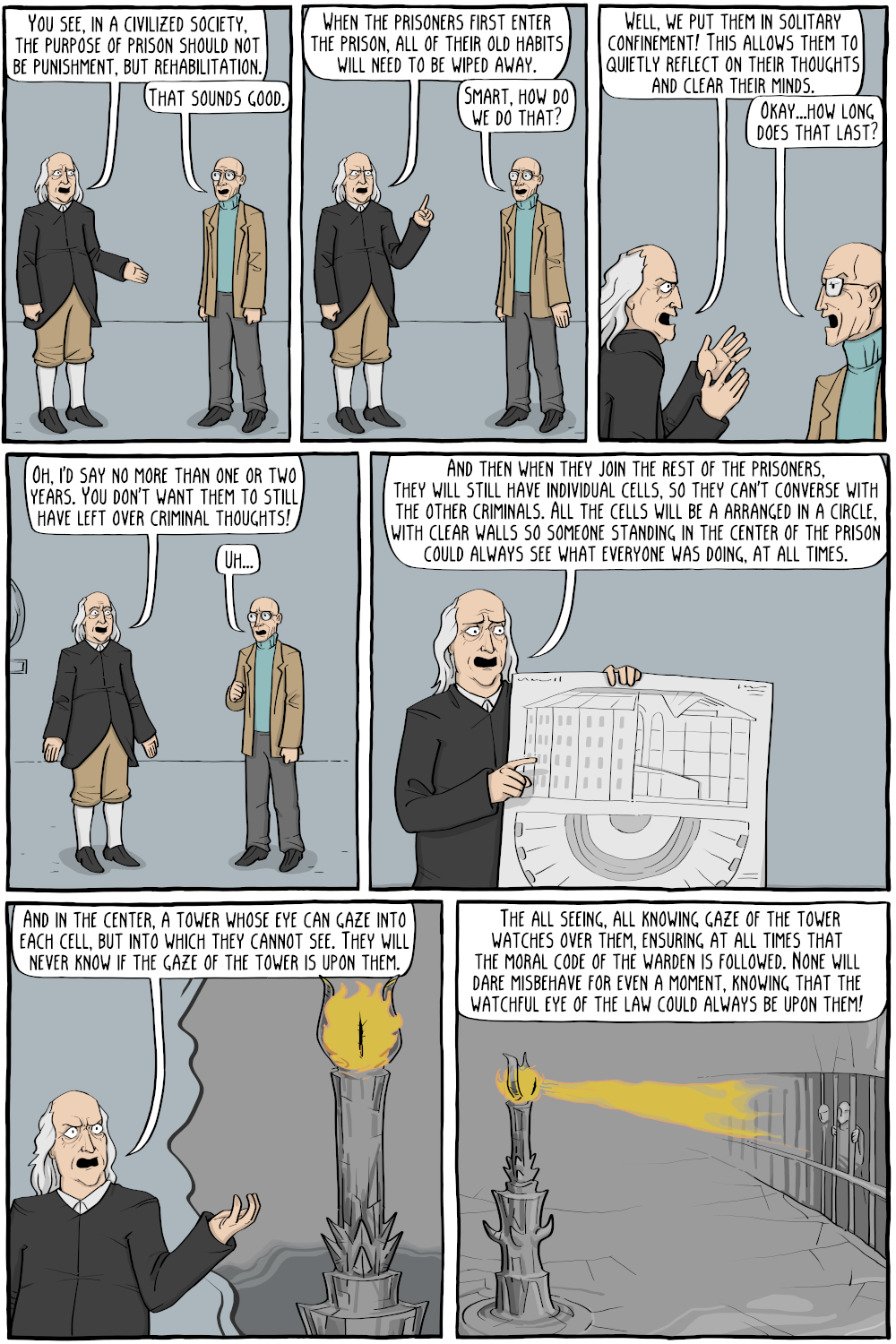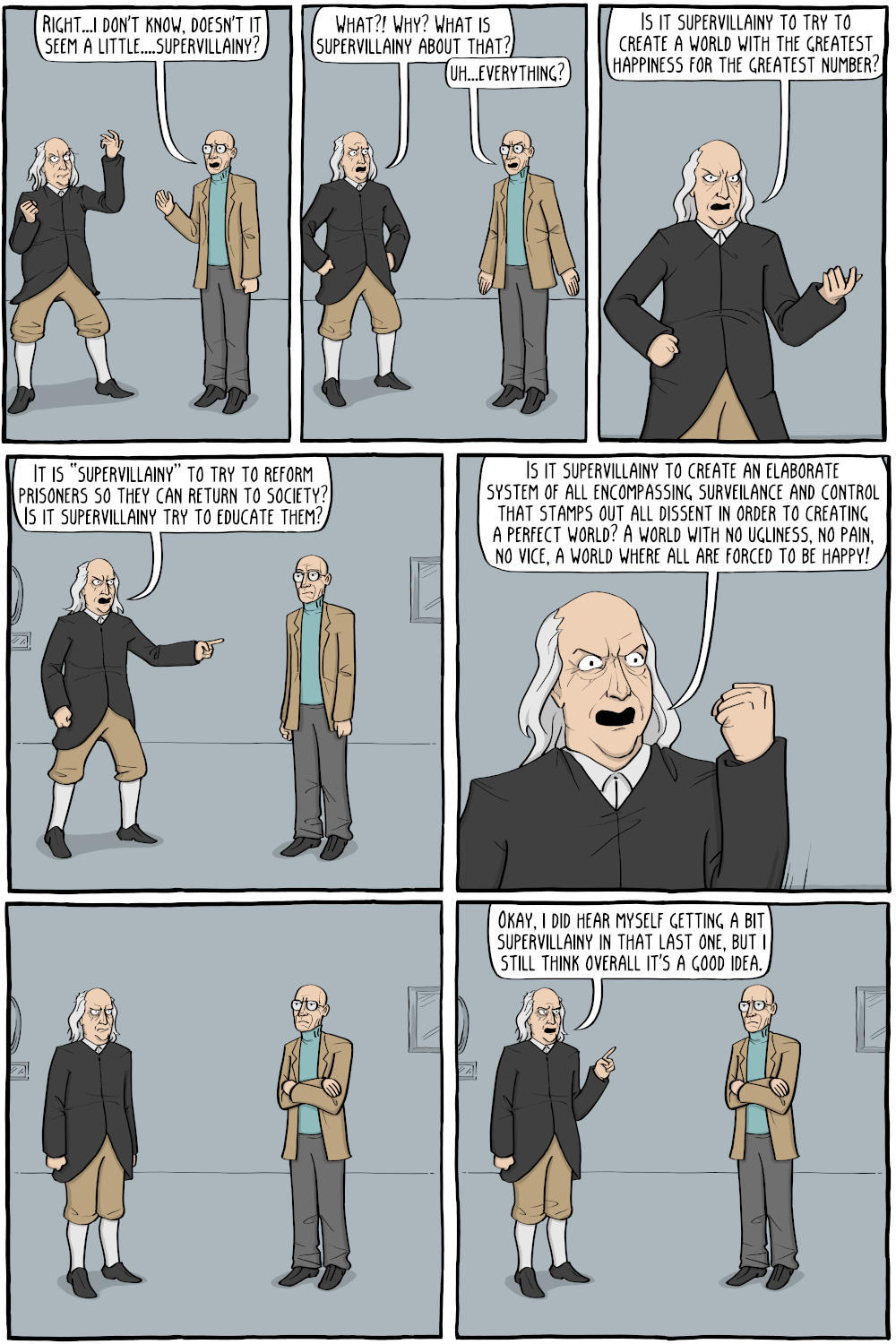
711
Jeremy Bentham Designs a Prison


The Panopticon was a design for a prison by Jeremy Bentham, which he not only proposed, but was rather obsessed by. He worked for years trying to secure government funding to construct one, which he felt would given his theories about rehabilitative penal systems empirical grounding. The main idea is that the very architecture of the prison would be designed around total surveillance of the prisoners, as each cell would be clearly visible by a central viewing station. His main selling point to the government was that this would save money, since only one guard could watch the entire population, or even no guards, since it was designed in such a way that the prisoners could never quite tell if someone was in the tower watching them or not. He also had ideas about using prolonged periods of solitary confinement, which we now know to be totally inhumane, to sort of "wipe clean" the minds of the prisoners before entering the prison. In addition he also thought forcing them to do menial labor tasks, like spinning looming wheels to "teach them the value of honest work". (again he pitched this to the government as a cost savings, since it would generate income). Some would consider it slavery.
The concept of the panopticon, as a sort of metaphor for society at large, became popular when Michel Foucault criticized it as a kind of evolution of society towards more and more control and domination, rather than a liberal reform away from more brutal forms of punishment. He thought that instead of more direct punishments, like flogging, which only punish the body, the panopticon seeks total domination of the subject's mind, in an attempt to create a passive, productive, working body. The prison was only the most direct and obvious kind of archetype of the panopticon, but Foucault thought that in reality people like Bentham created a system that sought far reaching control and surveillance over every aspect of life.
The Panopticon was a design for a prison by Jeremy Bentham, which he not only proposed, but was rather obsessed by. He worked for years trying to secure government funding to construct one, which he felt would given his theories about rehabilitative penal systems empirical grounding. The main idea is that the very architecture of the prison would be designed around total surveillance of the prisoners, as each cell would be clearly visible by a central viewing station. His main selling point to the government was that this would save money, since only one guard could watch the entire population, or even no guards, since it was designed in such a way that the prisoners could never quite tell if someone was in the tower watching them or not. He also had ideas about using prolonged periods of solitary confinement, which we now know to be totally inhumane, to sort of "wipe clean" the minds of the prisoners before entering the prison. In addition he also thought forcing them to do menial labor tasks, like spinning looming wheels to "teach them the value of honest work". (again he pitched this to the government as a cost savings, since it would generate income). Some would consider it slavery.
The concept of the panopticon, as a sort of metaphor for society at large, became popular when Michel Foucault criticized it as a kind of evolution of society towards more and more control and domination, rather than a liberal reform away from more brutal forms of punishment. He thought that instead of more direct punishments, like flogging, which only punish the body, the panopticon seeks total domination of the subject's mind, in an attempt to create a passive, productive, working body. The prison was only the most direct and obvious kind of archetype of the panopticon, but Foucault thought that in reality people like Bentham created a system that sought far reaching control and surveillance over every aspect of life.
Permanent Link to this Comic: https://existentialcomics.com/comic/303
Support the comic on Patreon!









